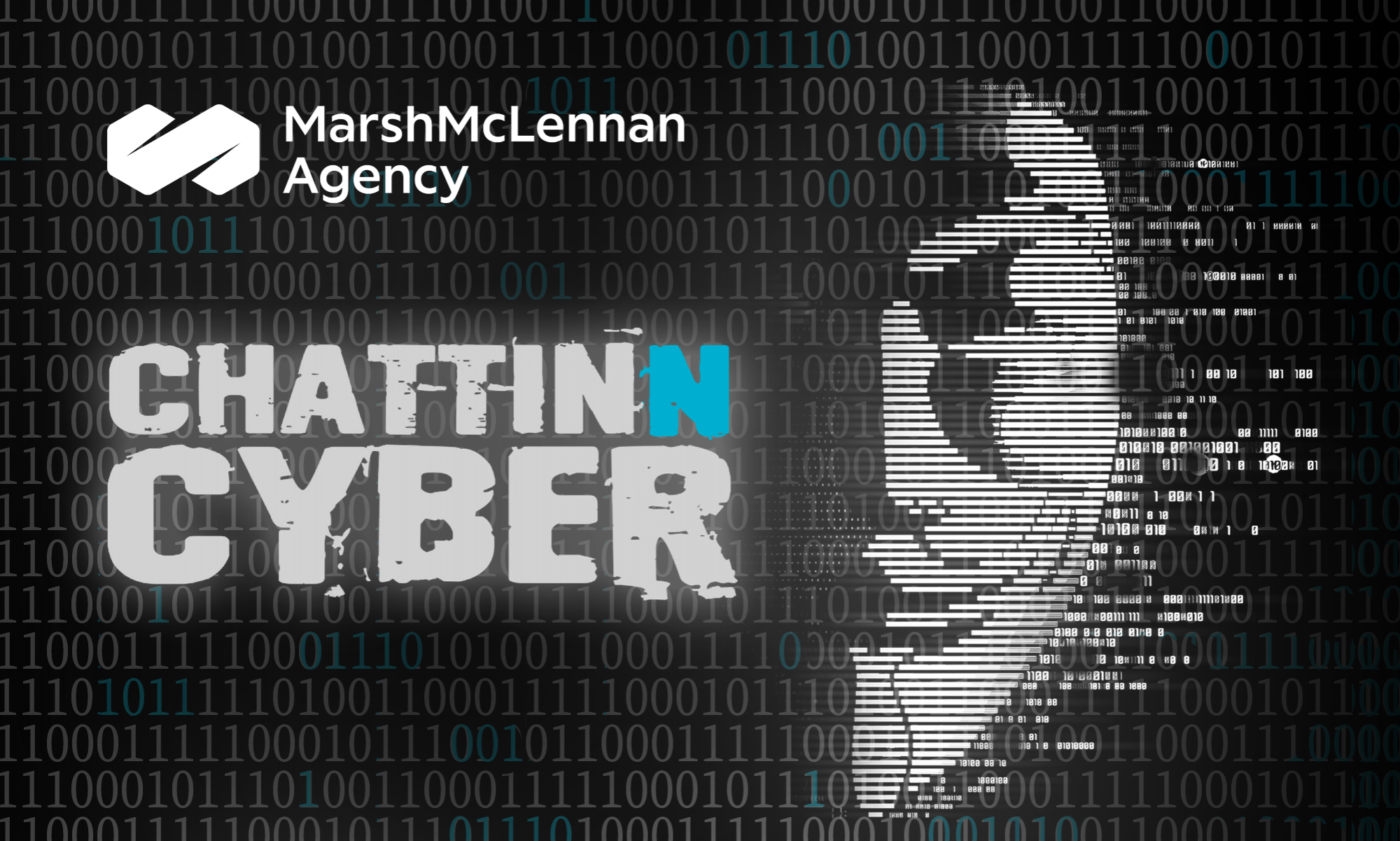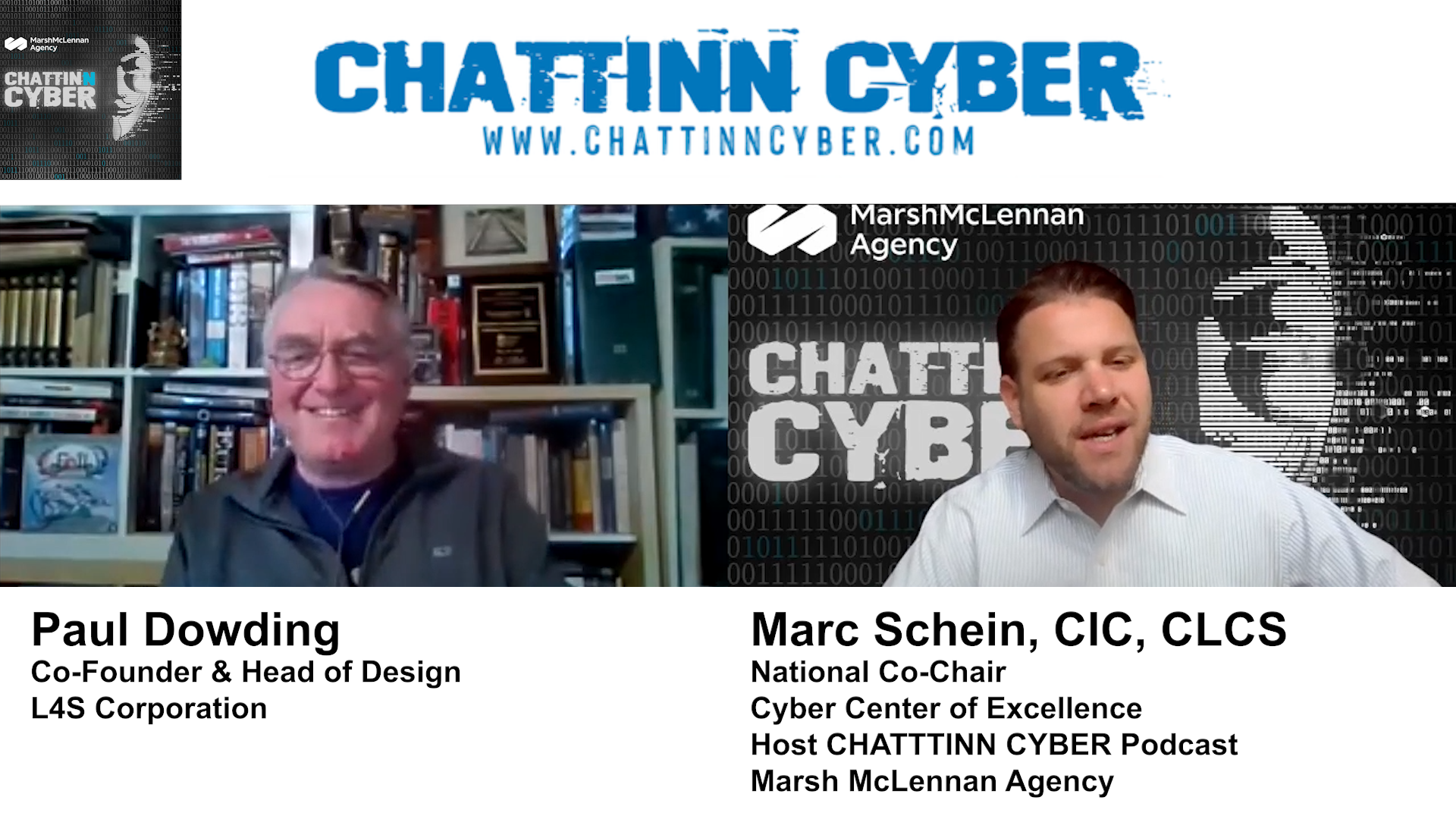Podcast: Play in new window | Download (Duration: 12:30 — 17.2MB)
Subscribe: RSS
Summary
In this episode of Chattinn Cyber, Marc Schein sits down to chat with Paul Dowding, co-founder and head of design at L4S Corporation, focusing on blockchain technology and its real-world applications. Paul, an authority on digital assets, begins by demystifying blockchain for novices, describing it as a distributed ledger system that eliminates reliance on central authorities for transaction validation. He explains the intricate process of trust-building within blockchain through mathematical hashing, emphasizing its potential to revolutionize peer-to-peer transactions and reduce errors.
The dialogue delves into Paul’s journey into blockchain, revealing his unique background in operational infrastructure and encryption. He recounts how his expertise in engineering and global banking operations converged, leading him to explore blockchain’s capabilities and limitations. Paul’s insights shed light on the challenges faced by early blockchain solutions and the development of Tapestry X, a distributed ledger designed to meet scalability, interoperability, and real-time processing needs.
Marc and Paul explore the intersection of blockchain with AI, highlighting opportunities for algorithmic inference and auditable record-keeping within blockchain networks. They envision a future where blockchain simplifies transactions to the extent of communication protocols, ushering in an era of seamless peer-to-peer interactions. Paul underscores the potential of blockchain in diverse sectors like capital markets, supply chain management, healthcare, and identity verification, showcasing the versatility and adaptability of L4S Corporation’s offerings.
The conversation concludes with Paul extending an invitation for further engagement through LinkedIn and TapestryX.com, emphasizing the accessibility of blockchain technology for businesses and individuals alike. His closing remarks underscore the transformative nature of blockchain as a process engineering and operational control innovation, urging listeners to perceive it beyond mere technological novelty. The dialogue encapsulates the profound impact of blockchain on transactional efficiency, trust-building, and future digital economies, setting the stage for continued exploration and innovation in this dynamic field.
Key Takeaways
- Blockchain is a distributed ledger technology that allows peer-to-peer transactions without a central authority. It uses cryptographic hashing to ensure data integrity.
- Blockchain has the potential to simplify transactions, reduce errors, and enable near real-time settlement. It could be as transformative as the internet protocol.
- Paul got involved with blockchain in 2014-2015 when enterprises were starting to explore it. He saw limitations in early solutions which led to developing Tapestry.
- There are opportunities to use blockchain to track what data AI bots have absorbed, creating an auditable record. AI could also potentially help drive what gets recorded on a blockchain.
- Tapestry is a configurable, scalable blockchain solution focused on accounting to enable real-time transactions. It is industry-agnostic and can be used for supply chain, healthcare, voting, and more.
Key Quotes
- [00:03:10] “So there’s a mathematical way to give your own ledger so that you can trust other people based on what you see, not what they present to you. And then there’s a method of agreeing it across the ledger. And so this allows, rather than you transacting through central authorities, what bitcoin really showed the world was you could transact peer-to-peer, or b-to-b, without that central authority, which then means you can settle in hours, minutes, or not seconds.”
- [00:06:15] “The […] origination of what became Tapestry X was going back to the basics and saying, okay, let’s take the blockchain concepts, but design a distributed ledger that meets the requirements, configurability, scalability, high capacity, real time with accounting and interoperability.”
- [00:08:04] “The Internet protocol made the Internet. No one could imagine Netflix streaming, Amazon, Airbnb, Uber before the Internet existed […] once it’s really implemented at scale and universally, [blockchain is] going to open up ideas and services that we can’t even imagine today.”
- [00:11:31] “Blockchain is not technological innovation. It’s a process engineering and operational control innovation. And that’s how people need to think about it.”
ABOUT OUR GUEST:
Throughout his career, Paul Dowding’s goals have been to develop and improve the global financial services industry commercially and operationally while making it intuitively accessible. Combining an engineering background with practical global operational industry experience and academic research, he has been able to affect innovative change collaboratively. Paul focuses on reducing risks and costs while improving the revenue opportunities, quality, accessibility and speed of innovation within the transactional industries via a differentiating approach to Distributed Ledger Technology (DLT), which he devised and helped design. He created TapestryX from an understanding of process engineering and control, encryption techniques and lay-interest in meta-mathematics.
FOLLOW OUR GUEST:
ABOUT OUR HOST:
National co-chair of the Cyber Center for Excellence, Marc Schein, CIC,CLCS is also a Risk Management Consultant at Marsh McLennan. He assists clients by customizing comprehensive commercial insurance programs that minimize the burden of financial loss through cost effective transfer of risk. By conducting a Total Cost of Risk (TCoR) assessment, he can determine any gaps in coverage. As part of an effective risk management insurance team, Marc collaborates with senior risk consultants, certified insurance counselors, and expert underwriters to examine the adequacy of existing client programs and develop customized solutions to transfer risk, improve coverage and minimize premiums.
FOLLOW OUR HOST:

